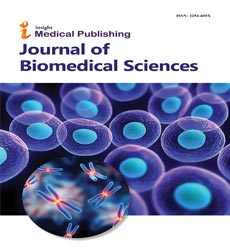Abstract
Dasatinib and Quercetin: Short-Term Simultaneous Administration Improves Physical Capacity in Human
Background: Senescent cells are one of the most toxic cells in the human and animal organism. When their amount reaches great quantity, it leads to the strong manifestation of aging signs. According to an explanation of the molecular genetic centriolar theory of aging during the division process cells’ generation reaches ultimate morphogenetic status. As a result, programmed cell death (apoptosis) must be activated or otherwise, cell transforms into the senescent cell.
Purpose: Senescent cells cause age-related pathologies. Theoretically, partial elimination of senescent cells must lead to increased life capacity. This hypothesis was confirmed on Ercc1 -/Δ mice. Periodic simultaneous administration of dasatinib and quercetin in Ercc1 -/Δ mice led to the extension of their healthspan, delaying agerelated symptoms and pathologies. We decided to test the senolytic effect of dasatinib and quercetin combination on human beings.
Study Design: With this purpose, the clinical trial was undertaken on 64 male volunteers over the age of 36. To put things into perspective our volunteers were classified into 4 groups with 16 people in each. D+Q group orally administered 50mg of dasatinib with 500 mg of quercetin once a day within 5 days.
Methods: To register and to assess changes stemmed from the drug compounds the whole trial was complemented with full medical screening and stair ascending test.
Results: As a result, 50 mg of dasatinib along with 500 mg of quercetin demonstrated obvious senolytic effect, it was justified by improved results of stair ascending test and tranquilized state of systolic blood pressure. Such dosage combination of these two compounds is highly probable to be harmless.
Conclusion: These results demonstrate the feasibility of senescent cells’ selective elimination on humans and the efficacy of senolytics for improving health and physical capacity.
Author(s):
Tkemaladze Jaba and Apkhazava David
Abstract | Full-Text | PDF
Share this

Abstracted/Indexed in
- Google Scholar
- Genamics JournalSeek
- China National Knowledge Infrastructure (CNKI)
- Directory of Research Journal Indexing (DRJI)
- WorldCat
- Secret Search Engine Labs
Open Access Journals
- Aquaculture & Veterinary Science
- Chemistry & Chemical Sciences
- Clinical Sciences
- Engineering
- General Science
- Genetics & Molecular Biology
- Health Care & Nursing
- Immunology & Microbiology
- Materials Science
- Mathematics & Physics
- Medical Sciences
- Neurology & Psychiatry
- Oncology & Cancer Science
- Pharmaceutical Sciences

